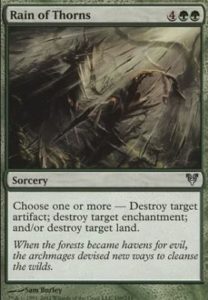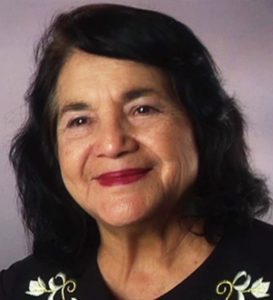Tag Archives: connection
Changes that Lead to Student Success
After years of doing assessments and submitting the results before the end-of-term deadline, I finally realized I could actually be using the data. I have finally made some consistent changes that have led to greater levels of understanding and success in my classroom. Here are my top three.
Change # 1
Every single Exercise Physiology class starts with music and movement. Not just some classes when I feel like it. All classes. You might be thinking to yourself, “well of course, it’s an exercise class, why wouldn’t you be doing exercise with them?” I am teaching the science of exercise, so they are basically learning anatomy and physiology and how that applies to the acute and chronic adaptations to exercise. So, it is highly plausible that I could lecture for 75 minutes straight. Zzzzzzzz.
But no more! I have physical and visual evidence that my students are more engaged following a three minute bout of movement to music that will last for at least 30 minutes.
Change # 2
I have Included the arts in my sciences. I make my students draw pictures in their notes. The art lovers in class really enjoy this, and the non-artsy people appreciate that I bring coloring pencils and I teach them how to draw in a very simplified manner. I also give them visuals to think about to really break down the parts of their drawing. For example, the cell body of a neuron looks a lot like an egg after you have thrown it onto a hot oily frying pan. And the central nervous system (brain and spinal cord) looks just like a lollipop.
It is much easier to review your notes when you have pictures depicting what your words are telling you. Just like I am more likely to read a textbook that has helpful pictures rather than all text and tables.
Change # 3
Less words on slides. I can actually watch their cortisol levels rise when I put up a slide that looks like it has 250 words on it. The serious note takers go into panic, wondering how they will ever jot down all these words. No matter how many times I tell them they have access to the slides, they still feel the need to write everything down, just in case it is on the test. So if you remove all that text and put down two key words that have an emotional impact, they are forced to think for themselves and jot down their own notes.
That is another opportunity to draw images on the board, give examples and simply explain the topic as it relates to their world. Then they give me their examples, we all nod in universal acceptance and we can move on to the next topic. Making an emotional connection will have a greater impact on memory compared to a slide full of words.
So just to recap: move to music for three minutes, encourage the arts, and post impactful words, not paragraphs.
School Lunch
The major downside to being an online instructor is the lack of meaningful interaction. Outside of a few e-mails, I rarely have a conversation with fellow faculty. Most of those are usually related to development of course materials or help with a student or technical issue.
When I taught face to face there was a fellow adjunct, Gary, who was in a similar situation. Twice a week I would walk into the adjunct office to find him sitting there at his laptop, cup of coffee in hand, smiling and commenting on the various comings and goings. Wearing a baseball cap and shorts, he made it clear he was just there to socialize. Looking back, I now understand and appreciate that longing he had to simply associate with a group of peers.
Sadly, I can’t come in a few times a week like he could, but what I can do is stress how important it is to do so if you are able.
Gary and I ended up having lunch a few times and talking about everything ranging from education techniques to our shared interest in writing fiction. I credit him with giving me enough courage to finally self-publish my first short story. Fast forward five years and I now have several short stories published, and am working on putting together a collection. Those lunch time conversations, and Gary’s need to socialize, were the main catalyst for me stretching myself to accomplish more than I would have otherwise done.
You never know how people you meet will influence you, it won’t always be positive, but more often than not in education it will be. Despite having various backgrounds, I find that most educators are open minded and friendly by nature (it is one of those unspoken requirements of staying in the field).
So, as I sign off for the last time this year, I wanted to leave everyone with a message of encouragement. Find a fellow teacher and go have lunch. Talk about ideas, education, hobbies, interests. Appreciate every moment of it, because whether you realize it or not, that ability to connect is not a given, and who knows, it may even help you become a better version of yourself.
Week 4: The “One Thing,” and How to Influence Assumptions
Welcome back to Week 4 of “The One Thing You can do to Raise Enrollment,” a six week “how-to” series.
Data is a powerful thing: It can confirm our assumptions as well as confound them, as in the story I shared in WEEK 1.
WEEK 2 empowered us upon learning that, when it comes to students choosing YOUR classes (and thus GCC), leaving choice up to chance is not our only option.
In WEEK 3 we covered how reputation is the most important factor in influencing people’s choices, and the importance of making our achievements public to enable people to make informed choices.
This week, let’s talk about your face. 
Face Facts: Numerous published studies provide countless evidence to support the fact that, when viewing a photo of a stranger’s face, it takes us less than a second to formulate an impression .
Assumptions about the character of the person pictured are formed quickly. One Princeton University study published by the Association for Psychological Science is a great example:
“Willis and Todorov conducted separate experiments to study judgments from facial appearance, each focusing on a different trait: attractiveness, likeability, competence, trustworthiness, and aggressiveness.” The results? Of all the traits, trustworthiness was the one participants assessed most quickly.
We cannot escape the fact that photos influence choice, so we will harness this fact and use it to our advantage.
Fear not – the good news is, people want to see trustworthiness and competence in your face, not a glamour shot.
Consider the following photos of these notables: Albert Einstein, Delores Huerta, Ta-Nehisi Coates, Ruth Bader Ginsburg, Conrad Wolfram.
The reasons for not wanting to post a photo:
- I’m not photogenic.
- I don’t like the way I look.
- My face will break the camera.
It’s not about vanity. It’s about character. It’s time to embrace the powerful sway your photo can have upon a stranger’s choice.
The employee bio page is the most underestimated tool available to you. A photo of your face, backed up with a personal quote, your areas of expertise, and a list of your achievements works to establish YOUR personal reputation while raising GCC’s reputation.
 By doing this “One Thing” you enable the public to make an informed decision to choose… you.
By doing this “One Thing” you enable the public to make an informed decision to choose… you.
WEEK 4 Homework: Because you are your own worst critic, your homework is to recruit friends and family to help you sort through photos of yourself to find one that captures the characteristics of trustworthiness and competence. The photo chosen by others just may surprise you.
TIP: The size of the photo on your employee bio page is 280×280 pixels. Make sure the photo your choose is cropped as a perfect square.
For tips on how to choose a photo, read Lydia Abbots’ 5 Tips for Picking the Right LinkedIn Profile Photo.
If you can’t find a photo, a GCC photographer is available.
Come back for WEEK 5: The “One Thing” Before and After
“You’ll never get a second chance to make a great first impression.”
Week 3: The “One Thing” and it’s Not Bragging
Welcome back to Week 3 of “The One Thing You can do to Raise Enrollment,” a six week “how-to” series.
Study after study has produced empirical evidence to support the fact that reputation is the most important factor influencing people’s college and class choices.
 “Without a strong reputation, colleges are unable to attract the resources necessary to build an effective educational environment. Institutional reputation attracts everything from the best professors and research talent to philanthropic donations and star students. Everyone wants to be a part of a winning team, and in education, that means investing in the best academic brand,” writes Joseph Torrillo, vice president of Reputation Management.
“Without a strong reputation, colleges are unable to attract the resources necessary to build an effective educational environment. Institutional reputation attracts everything from the best professors and research talent to philanthropic donations and star students. Everyone wants to be a part of a winning team, and in education, that means investing in the best academic brand,” writes Joseph Torrillo, vice president of Reputation Management.
As employees, we cannot sit back and passively place our hope in the power of the marketing department alone to define and manage our institutions’ reputations. Why? Because no amount of marketing can trump a personal experience with a brand.
I love this definition: Brand equity “is the intangible asset of added value or goodwill that results from the favorable image, impressions of differentiation, and/or the strength of consumer attachment to a company name,” writes Michael Belch and George Belch in their book, Advertising and Promotion: An Integrated Marketing Communications Perspective. (if this were a paper, the attribution would read, (Belch and Belch p. 56) …go ahead, makes me giggle a little, too.)
When a student has a good experience with a GCC employee, a curious thing happens: The student does not say, “I love that GCC employee named Lupe.” No, the student says, “I love GCC.”  A single good experience with a single employee packs a powerful boost to GCC’s overall reputation. Suddenly someone is singing praises of GCC to their friends, family, and strangers on social media.
A single good experience with a single employee packs a powerful boost to GCC’s overall reputation. Suddenly someone is singing praises of GCC to their friends, family, and strangers on social media.
However, experience is a double edged sword. When a student has a bad experience with a GCC employee, it’s not the employee they heap coals upon, it’s the overall institution.
Last week you spent some time writing a few statements that speak to your personal humanity.
This week your task is to… take a deep breath…
list your achievements. The purpose of this task is to make public any information that enables students to make an informed decision to choose you.
The purpose of this task is to make public any information that enables students to make an informed decision to choose you.
“If we are to achieve results never before accomplished, we must expect to employ methods never before attempted.” – Francis Bacon
The simple act of listing your areas of expertise and accomplishments in your Employee Biography page serves to significantly elevate GCC’s reputation on a local, national, and international scale.
It’s not bragging.  You ARE the secret sauce in GCC’s reputation! You have a history of proud moments, achievements and accomplishments that needs to come up in a google search.
You ARE the secret sauce in GCC’s reputation! You have a history of proud moments, achievements and accomplishments that needs to come up in a google search.
A bio page with secret sauce includes naming your areas of expertise, credentials, a personal quote, and some information that reveals your humanity and proudest moments.
Here is an example:
Name: John Doe
Credentials: AAS, M.A.Ed, Ph.D.
Areas of Expertise: Experiential Learning; Community Partnerships
Personal Quote: “I got my Doctorate at Yale, but I identify more with the students who come to GCC.”
Bio: Example 1: Four generations of my family have come to GCC to get their first college degree. Ask me why…
Example 2: If it were not for my 9th grade math teacher, I would not be where I am today. He never gave up on me. I want to inspire my students the way he inspired me, and see what can be achieved.
Example 3: I was the first person in my family to go to college, and I was excited and scared at the same time.
Example 4: My proudest moment was when…
Bulleted lists might include: education, awards, specialized training, published research/articles/books, grant funded projects, committees, pro bono work, volunteerism, boards served, etc.
Teach others how and what to think about you, and it forms a reputation in their minds for GCC as well. Take this time detail what you offer – leave no doubt in the reader’s mind that not only are you are a devoted educator, but you are a nice person to boot.
Reputation wields compelling, persuasive, influential power.
Your homework this week: Begin listing the ingredients that make up your particular secret sauce. These may include your personal areas of expertise and scope of services, awards, thesis topic/description, published works, patents, specialized training, published news about you, your motivation, what inspires you, the thing(s) you love most about what you do, and…
 …(at least) one thing you want to be remembered for should you drop dead tomorrow.
…(at least) one thing you want to be remembered for should you drop dead tomorrow.
It’s Presidents’ Day weekend, established in 1885 to honor George Washington and Abraham Lincoln whose reputations for honesty and integrity still inspire us today.
This weekend, carve out some time to work on defining YOUR enduring reputation. Then come back for Week 4. The “One Thing,” and How to Influence Assumptions
Delving for a Common Bond
Cultural engagement was the only reason I survived my worst class as an instructor early in my career. In the past I have made reference to the issues I had with classroom management during my first years teaching, and this specific group was the quintessential struggle.
Four weeks in I had already become a victim of the tail wagging the dog. It was difficult to even get through an entire lecture in the given 50 minutes class time. A group of young men who I had from a previous fundamentals course, already aware of my weaknesses, went out of their way to keep me off task. Annoying to be sure, but the hit on the head literally came the day I pulled down the projector screen only to be showered in a rain of sharpened pencils.

I have no idea how long it took them to do it, and it was only well after the fact I found out the specific mastermind, but it was a low point in my teaching career. I felt embarrassed, incompetent, and to be honest, slightly enraged.
The real tragedy was this was a very intelligent group of students; witty, calculating, even thoughtful if properly provoked. My reaction, post a stern lecture after class, was to invoke my syllabus clause on classroom etiquette and make direct reductions to their final point total.
After that day there were several in the group that started to arrive late. They lost interest and motivation, and the classroom environment took a 180 from circus to jail cell. I finished my lectures with twenty minutes to spare and found getting responses to questions was like pulling teeth. The previous relationship had been unhealthy, but the current disconnect was equally detrimental.
The day soon came where I questioned one of the students why the others were late. He informed me they were busy playing Magic the Gathering in the commons area. Without hesitation I made a quip about them “tapping out” in order to get to class on time. I was familiar with Magic from my own High School and College days, and although a bit removed at this point, the terminology must have been exclusive enough to pique his interest, and the interest of the others.
The next day they arrived early, they questioned me if I still played, and if I had any old cards I wanted to sell. Thankfully, my “No and No” response didn’t deter them from being engaged throughout class. I had stumbled on a bond, I had unwittingly admitted to being a member of their small cultural niche (albeit in ages past).
Not long after, at their behest, I started to come by the commons area and watch them play. I’d ask questions about rule changes, comment on their play style, but mainly engage as a simple observer. The more knowledge about their favorite pastime I displayed, the more responsive they became in class.

I am not going to claim that it ended up being the best class I have taught. However, it was the best I have ever made of such a bad start to anything. The class found a happy middle ground between circus and prison. In the end, we all made it through a little wiser than when we had begun.
I wore compression socks to work today
My non-teaching job forces me out of bed at 4:30am to work stock crew at a retail store and requires me to be on my feet for long periods of time. In an effort to combat the leg fatigue and edema, I broke down and purchased compression socks—and not the really cool kind that lifters and runners and crossfitters wear. The ugly kind…the ones that are purely functional and “flesh”-toned, with subtle hints of jaundice.
They are glorious.
I’m pretty sure they solidify my status as “old,” and while I may be a few years shy of my AARP card, they are a reminder of the ever-growing age gap between me and my students. Every year, I get older, but my students stay roughly the same age. When I first started teaching at community colleges, I was 29, just 11 years older than my youngest students. Finding course content that connected with them was easy, mostly because they had experienced the same significant cultural moments that I had. I could pepper a class discussion with references to the O.J. Simpson trial or Brandi Chastain’s game-winning kick and subsequent disrobing; and my students responded with knowing head nods.

That isn’t the case today. I’m 15 years older; they’re still roughly 18-25.
Earlier this week when a class discussion on precise word choices afforded me the opportunity to quote Inigo Montoya, I suggested that it’s important to choose words wisely to avoid comments on their paper like “you keep using that word. I do not think it means what you think it means.” My students didn’t laugh. Instead, they just stared at me…blankly. Even when I humbly offered, “The Princess Bride?…anyone? No? Just me?”…nothing. And in that moment, I realized that another one of my “go-to” references needed to be updated.

Every semester, I’m faced with the reality that connecting with my students is much harder than it used to be. I am growing increasingly more aware of the fact that my students aren’t knowledgeable of the same events I am, nor do they relate to the world the same way I do. As educators, we talk a lot about the importance of student engagement and its direct correlation to student success and retention, and so every semester, in an effort to close the growing age gap, I actively seek out new supplemental content that will help them make connections between their reality and the skills we ask them to master. Surprisingly, a majority of this new content comes from former students.
When a class asks me if I have heard about a recent event or seen a viral video or a social media post or a T.V. show, I carve out time to look it up. At worst, I find it obtuse or offensive; but even then, I am learning more about the interests of this generation of students, and that knowledge helps me connect to them in other ways. More often than not, though, it is something I can use during a future class discussion, and in those moments, they teach me, helping me understand their world—and mine—a little bit better.
I hope that I never lose the ability to make those connections with my students, that I never get to the place where my class never changes and I have become Ferris Bueller’s economics teacher Professor Binns, droning on incessantly and completely oblivious to my classroom of sleeping students. I hope that I never run out of new material…but if I do, I can always fall back on a cute kitten .gif. Everyone loves a cute kitten .gif.

Gather Around the Coffee Mug
The significance of building relationships is often overlooked in education. As a teacher, it is easy to fall into that boss/employee relationship with your students. As a professor, it is easy to get the feeling that you are on your own, with little support outside of the occasional observation from a superior.
Fortunately there is an easy solution to both of these problems:
Coffee.

When I first started teaching I had a difficult time managing the classroom. Despite their classroom antics, I found they still would always say hello or try to strike up a conversation when I was on my lunch break having a cup of coffee.
Eventually this evolved into a post-class ritual: I would leave the class, go the to the lunch area, and have coffee. Those students who did not have a class to go to would join me. We would chat about things, sometimes English related, sometimes movies, and sometimes just idle banter.
As the semester moved on, my insecurities within the classroom started to diminish. I was more comfortable with the class, and they realized I was just as human as everyone else.
Fast-forward a few years and I found myself in a similar situation in the Adjunct Faculty Office. There was always a silence there, the room serving as a cross street as we sped to our various destinations. On the rare occasion a question or idea would come up, but it was far from a daily occurrence.

The solution was to make things more personal, have a chat, offer that cup of coffee. It wasn’t long before I started having lunch and coffee with a few of my fellow adjuncts. At those short meetings I was able to discuss assignments, classroom management, teaching techniques, and various other topics that made me a better instructor and a better person. One person in particular, Gary, even encouraged me to pursue publishing my short stories after the topic came up during one of our lunch breaks. That one conversation had a major impact on my life.
So the final message I leave is this: Students are people. Teachers are people. We all have similar fears, desires, struggles, and pursuits. Discovering that bond in a structured environment can be difficult, but put a lunch or nice hot cup of coffee in the mix, and friendship is just around the corner.
Student Success (from a Fiscal Perspective)
How many times a day do you see, hear, or think about the phrase “student success”? It is our primary goal, our focus, and the driving force behind everything we do. What about when your job duties (including the “other duties as assigned”) do not bring you in direct contact with students? Can you still contribute to student success? The answer is yes.
This is something I think about often because we are frequently asked to report on how we promote student success and I have a job that does not bring me in direct contact with students. However, after reading some of my fellow bloggers’ posts, I found that I am not alone in my assertion that yes I can contribute to student success.
I promote student success by helping faculty members navigate the myriad of forms, processes, and systems we have in the fiscal world. When faculty members are successful at the non-teaching part of their jobs, they are likely to translate that feeling into a happier and more successful learning environment. In “Sincere Thanks from an Adjunct” Chris Krause says, “The positive feelings and willingness to help I have experienced outside the classroom spills over into my classes as well. Students are the direct beneficiaries of this. I can be more available and am more willing to advocate for them when needed, because I am happy and comfortable in the environment” (Write 6X6 Blog).
I promote student success by participating in the One2One mentoring program. This program allows me to share with students strategies I have used to overcome obstacles in obtaining a college degree or finding my way around campus or dealing with the pressures of family, job and college all at the same time. It gives me an opportunity to listen and learn what that student needs to be successful and offer guidance and reassurance that their goals are attainable. Ladonna Lewis, in “Coming Out of the Closet,” says “We all have closets that we can come out of with our students when appropriate” and “Maybe we can just listen to them sometimes, and try to connect them with resources. Sometimes for students, just seeing that someone like them can be a college professor, or administrator, or professional, can help them see themselves achieving their goals” (Write 6X6 Blog).
I promote student success by identifying myself as an employee of GCC. When I walk through the Enrollment Center or across campus students routinely stop me and ask directions, how to work the computers, or where to get help with… you name it. Every day I come to work there is an opportunity for me to make a difference, taking the time to stop and answer their questions (or find someone who can) is a little thing that can make a big impact. In “Feeling Disgruntled?” Ingrid Austin says, “Just remember that we’re here to make a difference and that everything we do should be done with pride, joy, and self-satisfaction because what we do matters. It matters to the students who are out there making an effort to better themselves” (Write 6X6 Blog).
Finally, I hope to promote student success in the future by accepting the suggestion of President Kovala. In “Random Acts of Relief” she says, “… to pay it forward with these and any other great ideas to give our students the extra nudge to the finish line. Stopping a student on the sidewalk and simply asking how they are doing, or walking through computer commons or the Library and checking in with students as they are busily working on the computer. Better yet, when a student is in line at Grounds for Thought, offer to pay for their coffee. These small gestures go a long way to assure students know we care about them and their success” (Write 6X6 Blog).
Connection
While we often think of student success in academic terms like persistence, completion or matriculation, the real word to define student success is “connection.” Do you remember your college days when that one staff member (faculty, advisor, cafeteria worker etc) reached out to you in a way that none other had? Someone who showed a real interest in your talent, your progress, your life? In my case, it was David Langley, Director of Residence Life, who took me under his wing and with great encouragement, helped me to see the path in student affairs where my early career began. We all had one or more college staffer who went above and beyond to ensure that you felt important, had a plan and the support of the college through his or her voice. That is exactly what it is like for our students as well.
Each time a student tells me about their GCC story, it always involves someone who simply took an interest in their work, their plan, their struggles, their triumphs and nurtured them along the way because they wanted to, with no expectation of external reward. When a student feels they are cared for, it gives them the extra boost, the extra self- confidence, to complete the assignment, finish the course and move on to the next semester.
Showing you care about a student is the kind of overture that goes on every day at GCC. And we are known by the “high touch” reputation that only faculty and staff can demonstrate regularly. My words of advice are to keep it up and let it become contagious within your department, in the divisions and across the college so that each student will say with a smile,” I feel like I was SOMEBODY at GCC because they actually cared about me. “ CONNECTION!





